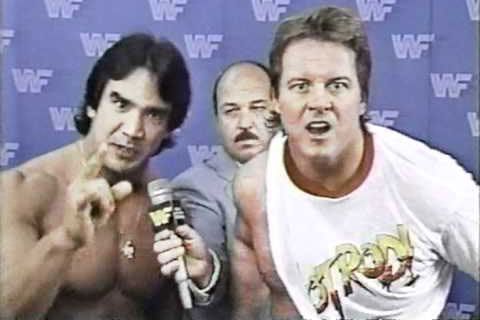Post by spacejam on Nov 20, 2007 14:12:10 GMT -5
www.nytimes.com
Sunny days! The earliest episodes of “Sesame Street” are available on digital video! Break out some Keebler products, fire up the DVD player and prepare for the exquisite pleasure-pain of top-shelf nostalgia.
Just don’t bring the children. According to an earnest warning on Volumes 1 and 2, “Sesame Street: Old School” is adults-only: “These early ‘Sesame Street’ episodes are intended for grown-ups, and may not suit the needs of today’s preschool child.”
Say what? At a recent all-ages home screening, a hush fell over the room. “What did they do to us?” asked one Gen-X mother of two, finally. The show rolled, and the sweet trauma came flooding back. What they did to us was hard-core. Man, was that scene rough. The masonry on the dingy brownstone at 123 Sesame Street, where the closeted Ernie and Bert shared a dismal basement apartment, was deteriorating. Cookie Monster was on a fast track to diabetes. Oscar’s depression was untreated. Prozacky Elmo didn’t exist.
Nothing in the children’s entertainment of today, candy-colored animation hopped up on computer tricks, can prepare young or old for this frightening glimpse of simpler times. Back then — as on the very first episode, which aired on PBS Nov. 10, 1969 — a pretty, lonely girl like Sally might find herself befriended by an older male stranger who held her hand and took her home. Granted, Gordon just wanted Sally to meet his wife and have some milk and cookies, but . . . well, he could have wanted anything. As it was, he fed her milk and cookies. The milk looks dangerously whole.
Live-action cows also charge the 1969 screen — cows eating common grass, not grain improved with hormones. Cows are milked by plain old farmers, who use their unsanitary hands and fill one bucket at a time. Elsewhere, two brothers risk concussion while whaling on each other with allergenic feather pillows. Overweight layabouts, lacking touch-screen iPods and headphones, jockey for airtime with their deafening transistor radios. And one of those radios plays a late-’60s news report — something about a “senior American official” and “two billion in credit over the next five years” — that conjures a bleak economic climate, with war debt and stagflation in the offing.
The old “Sesame Street” is not for the faint of heart, and certainly not for softies born since 1998, when the chipper “Elmo’s World” started. Anyone who considers bull markets normal, extracurricular activities sacrosanct and New York a tidy, governable place — well, the original “Sesame Street” might hurt your feelings.
I asked Carol-Lynn Parente, the executive producer of “Sesame Street,” how exactly the first episodes were unsuitable for toddlers in 2007. She told me about Alistair Cookie and the parody “Monsterpiece Theater.” Alistair Cookie, played by Cookie Monster, used to appear with a pipe, which he later gobbled. According to Parente, “That modeled the wrong behavior” — smoking, eating pipes — “so we reshot those scenes without the pipe, and then we dropped the parody altogether.”
Which brought Parente to a feature of “Sesame Street” that had not been reconstructed: the chronically mood-disordered Oscar the Grouch. On the first episode, Oscar seems irredeemably miserable — hypersensitive, sarcastic, misanthropic. (Bert, too, is described as grouchy; none of the characters, in fact, is especially sunshiney except maybe Ernie, who also seems slow.) “We might not be able to create a character like Oscar now,” she said.
Snuffleupagus is visible only to Big Bird; since 1985, all the characters can see him, as Big Bird’s old protestations that he was not hallucinating came to seem a little creepy, not to mention somewhat strained. As for Cookie Monster, he can be seen in the old-school episodes in his former inglorious incarnation: a blue, googly-eyed cookievore with a signature gobble (“om nom nom nom”). Originally designed by Jim Henson for use in commercials for General Foods International and Frito-Lay, Cookie Monster was never a righteous figure. His controversial conversion to a more diverse diet wouldn’t come until 2005, and in the early seasons he comes across a Child’s First Addict.
The biggest surprise of the early episodes is the rural — agrarian, even — sequences. Episode 1 spends a stoned time warp in the company of backlighted cows, while they mill around and chew cud. This pastoral scene rolls to an industrial voiceover explaining dairy farms, and the sleepy chords of Joe Raposo’s aimless masterpiece, “Hey Cow, I See You Now.” Chewing the grass so green/Making the milk/Waiting for milking time/Waiting for giving time/Mmmmm.
Oh, what’s that? Right, the trance of early “Sesame Street” and its country-time sequences. In spite of the show’s devotion to its “target child,” the “4-year-old inner-city black youngster” (as The New York Times explained in 1979), the first episodes join kids cavorting in amber waves of grain — black children, mostly, who must be pressed into service as the face of America’s farms uniquely on “Sesame Street.”
In East Harlem and Bedford-Stuyvesant in 1978, 95 percent of households with kids ages 2 to 5 watched “Sesame Street.” The figure was even higher in Washington. Nationwide, though, the number wasn’t much lower, and was largely determined by the whims of the PBS affiliates: 80 percent in houses with young children. The so-called inner city became anywhere that “Sesame Street” played, because the Children’s Television Workshop declared the inner city not a grim sociological reality but a full-color fantasy — an eccentric scene, framed by a box and far removed from real farmland and city streets alike.
The concept of the “inner city” — or “slums,” as The Times bluntly put it in its first review of “Sesame Street” — was therefore transformed into a kind of Xanadu on the show: a bright, no-clouds, clear-air place where people bopped around with monsters and didn’t worry too much about money, cleanliness or projecting false cheer. The Upper West Side, hardly a burned-out ghetto, was said to be the model.
People on “Sesame Street” had limited possibilities and fixed identities, and (the best part) you weren’t expected to change much. The harshness of existence was a given, and no one was proposing that numbers and letters would lead you “out” of your inner city to Elysian suburbs. Instead, “Sesame Street” suggested that learning might merely make our days more bearable, more interesting, funnier. It encouraged us, above all, to be nice to our neighbors and to cultivate the safer pleasures that take the edge off — taking baths, eating cookies, reading. Don’t tell the kids.
Points of Entry
Caveat teletor: Volumes 1 and 2 of “Sesame Street: Old School” are available on DVD, which you can sample and buy on Sesameworkshop.org. With a few episodes, extras and celebrity appearances by the likes of Richard Pryor and Lou Rawls, “Old School” sounds harmless enough. But are you ready to mainline this much ’70s nostalgia?
The Way Old: YouTube is great for performance art. If 1969 is not far back enough for you, how’s 1935? The Oscar-winning short film “How to Sleep,” by the Algonquin Round-Tabler Robert Benchley, can be found here in sumptuous black-and-white; search for his name and the film’s title on YouTube.
Come of Age: Marshall Herskovitz and Edward Zwick, the men of “My So-Called Life” and “thirtysomething,” have at last introduced their online-only young-adult series, “Quarterlife.” It started Nov. 11 on MySpaceTV.com, and it marks the first time a network-quality series — a long indie film, really — has been produced directly for the Internet. If the old times unnerve you, welcome to the new times.
Sunny days! The earliest episodes of “Sesame Street” are available on digital video! Break out some Keebler products, fire up the DVD player and prepare for the exquisite pleasure-pain of top-shelf nostalgia.
Just don’t bring the children. According to an earnest warning on Volumes 1 and 2, “Sesame Street: Old School” is adults-only: “These early ‘Sesame Street’ episodes are intended for grown-ups, and may not suit the needs of today’s preschool child.”
Say what? At a recent all-ages home screening, a hush fell over the room. “What did they do to us?” asked one Gen-X mother of two, finally. The show rolled, and the sweet trauma came flooding back. What they did to us was hard-core. Man, was that scene rough. The masonry on the dingy brownstone at 123 Sesame Street, where the closeted Ernie and Bert shared a dismal basement apartment, was deteriorating. Cookie Monster was on a fast track to diabetes. Oscar’s depression was untreated. Prozacky Elmo didn’t exist.
Nothing in the children’s entertainment of today, candy-colored animation hopped up on computer tricks, can prepare young or old for this frightening glimpse of simpler times. Back then — as on the very first episode, which aired on PBS Nov. 10, 1969 — a pretty, lonely girl like Sally might find herself befriended by an older male stranger who held her hand and took her home. Granted, Gordon just wanted Sally to meet his wife and have some milk and cookies, but . . . well, he could have wanted anything. As it was, he fed her milk and cookies. The milk looks dangerously whole.
Live-action cows also charge the 1969 screen — cows eating common grass, not grain improved with hormones. Cows are milked by plain old farmers, who use their unsanitary hands and fill one bucket at a time. Elsewhere, two brothers risk concussion while whaling on each other with allergenic feather pillows. Overweight layabouts, lacking touch-screen iPods and headphones, jockey for airtime with their deafening transistor radios. And one of those radios plays a late-’60s news report — something about a “senior American official” and “two billion in credit over the next five years” — that conjures a bleak economic climate, with war debt and stagflation in the offing.
The old “Sesame Street” is not for the faint of heart, and certainly not for softies born since 1998, when the chipper “Elmo’s World” started. Anyone who considers bull markets normal, extracurricular activities sacrosanct and New York a tidy, governable place — well, the original “Sesame Street” might hurt your feelings.
I asked Carol-Lynn Parente, the executive producer of “Sesame Street,” how exactly the first episodes were unsuitable for toddlers in 2007. She told me about Alistair Cookie and the parody “Monsterpiece Theater.” Alistair Cookie, played by Cookie Monster, used to appear with a pipe, which he later gobbled. According to Parente, “That modeled the wrong behavior” — smoking, eating pipes — “so we reshot those scenes without the pipe, and then we dropped the parody altogether.”
Which brought Parente to a feature of “Sesame Street” that had not been reconstructed: the chronically mood-disordered Oscar the Grouch. On the first episode, Oscar seems irredeemably miserable — hypersensitive, sarcastic, misanthropic. (Bert, too, is described as grouchy; none of the characters, in fact, is especially sunshiney except maybe Ernie, who also seems slow.) “We might not be able to create a character like Oscar now,” she said.
Snuffleupagus is visible only to Big Bird; since 1985, all the characters can see him, as Big Bird’s old protestations that he was not hallucinating came to seem a little creepy, not to mention somewhat strained. As for Cookie Monster, he can be seen in the old-school episodes in his former inglorious incarnation: a blue, googly-eyed cookievore with a signature gobble (“om nom nom nom”). Originally designed by Jim Henson for use in commercials for General Foods International and Frito-Lay, Cookie Monster was never a righteous figure. His controversial conversion to a more diverse diet wouldn’t come until 2005, and in the early seasons he comes across a Child’s First Addict.
The biggest surprise of the early episodes is the rural — agrarian, even — sequences. Episode 1 spends a stoned time warp in the company of backlighted cows, while they mill around and chew cud. This pastoral scene rolls to an industrial voiceover explaining dairy farms, and the sleepy chords of Joe Raposo’s aimless masterpiece, “Hey Cow, I See You Now.” Chewing the grass so green/Making the milk/Waiting for milking time/Waiting for giving time/Mmmmm.
Oh, what’s that? Right, the trance of early “Sesame Street” and its country-time sequences. In spite of the show’s devotion to its “target child,” the “4-year-old inner-city black youngster” (as The New York Times explained in 1979), the first episodes join kids cavorting in amber waves of grain — black children, mostly, who must be pressed into service as the face of America’s farms uniquely on “Sesame Street.”
In East Harlem and Bedford-Stuyvesant in 1978, 95 percent of households with kids ages 2 to 5 watched “Sesame Street.” The figure was even higher in Washington. Nationwide, though, the number wasn’t much lower, and was largely determined by the whims of the PBS affiliates: 80 percent in houses with young children. The so-called inner city became anywhere that “Sesame Street” played, because the Children’s Television Workshop declared the inner city not a grim sociological reality but a full-color fantasy — an eccentric scene, framed by a box and far removed from real farmland and city streets alike.
The concept of the “inner city” — or “slums,” as The Times bluntly put it in its first review of “Sesame Street” — was therefore transformed into a kind of Xanadu on the show: a bright, no-clouds, clear-air place where people bopped around with monsters and didn’t worry too much about money, cleanliness or projecting false cheer. The Upper West Side, hardly a burned-out ghetto, was said to be the model.
People on “Sesame Street” had limited possibilities and fixed identities, and (the best part) you weren’t expected to change much. The harshness of existence was a given, and no one was proposing that numbers and letters would lead you “out” of your inner city to Elysian suburbs. Instead, “Sesame Street” suggested that learning might merely make our days more bearable, more interesting, funnier. It encouraged us, above all, to be nice to our neighbors and to cultivate the safer pleasures that take the edge off — taking baths, eating cookies, reading. Don’t tell the kids.
Points of Entry
Caveat teletor: Volumes 1 and 2 of “Sesame Street: Old School” are available on DVD, which you can sample and buy on Sesameworkshop.org. With a few episodes, extras and celebrity appearances by the likes of Richard Pryor and Lou Rawls, “Old School” sounds harmless enough. But are you ready to mainline this much ’70s nostalgia?
The Way Old: YouTube is great for performance art. If 1969 is not far back enough for you, how’s 1935? The Oscar-winning short film “How to Sleep,” by the Algonquin Round-Tabler Robert Benchley, can be found here in sumptuous black-and-white; search for his name and the film’s title on YouTube.
Come of Age: Marshall Herskovitz and Edward Zwick, the men of “My So-Called Life” and “thirtysomething,” have at last introduced their online-only young-adult series, “Quarterlife.” It started Nov. 11 on MySpaceTV.com, and it marks the first time a network-quality series — a long indie film, really — has been produced directly for the Internet. If the old times unnerve you, welcome to the new times.









 er!' He's got the perfect mouth for it."
er!' He's got the perfect mouth for it."


